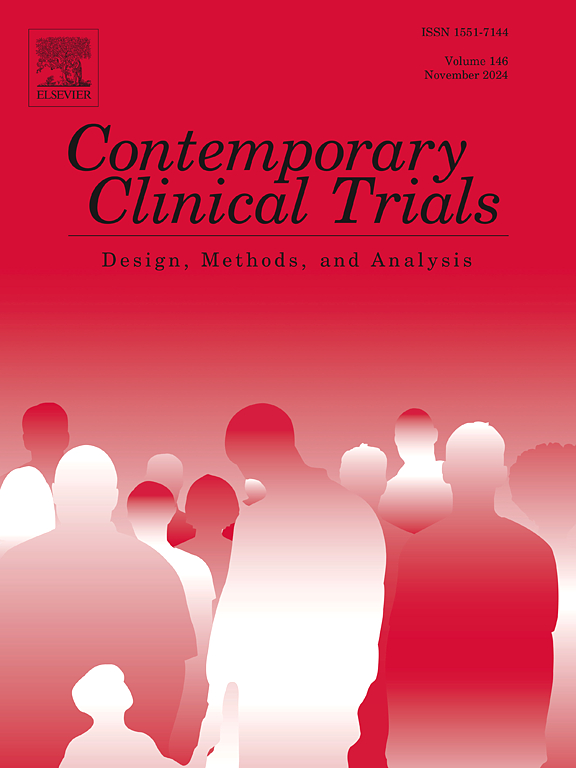Research recruitment strategies in the digital era: Opportunities and challenges of social media
IF 1.9
3区 医学
Q3 MEDICINE, RESEARCH & EXPERIMENTAL
引用次数: 0
Abstract
Background
Effective recruitment is crucial for clinical research, yet traditional methods can be costly and time-consuming. Digital platforms offer a promising opportunity for reaching broader populations. This paper aims to provide a descriptive analysis of digital and traditional recruitment strategies used to engage women with functional hypothalamic amenorrhea (FHA) and identify the most effective methods.
Methods
From January 2023 to November 2024, women aged 18–40 were recruited through traditional methods (flyers, referrals, word-of-mouth, health fairs) and digital platforms (Instagram, X, Facebook, Reddit, podcasts, electronic boards, clinical trial websites, data exploration tool). Respondents were categorized into “All”, “Consented,” and “Completed,” then stratified by generation and geographic location. Enrollment and completion rates were calculated.
Results
Among 220 respondents (mean age 28.0 ± 5.9 years), 74 (34 %) consented, and 47 (21 %) completed participation. Of all responses, Instagram provided the highest recruitment (37 %, n = 82), but had the lowest enrollment rate (17 %). Podcasts and word-of-mouth were also effective, with physician referrals yielding the highest enrollment (80 %) and completion (100 %) rates yet representing one of the lowest recruitment counts (n = 5). While digital strategies had three times more outreach, enrollment and completion rates remained similar to those of traditional methods. Millennials (n = 117) relied more on Facebook and Podcasts, while Gen Z (n = 102) engaged more via electronic boards and Reddit.
Conclusions
Digital platforms, particularly social media and podcasts showed significant potential to enhance recruitment efficiency and outreach. However, varying completion rates across methods underscore the importance of a multifaceted approach to ensure participant diversity and study generalizability.
研究数字时代的招聘策略:社交媒体的机遇与挑战。
背景:有效的招募对临床研究至关重要,然而传统的方法既昂贵又耗时。数字平台为更广泛的人群提供了一个有希望的机会。本文旨在对用于吸引功能性下丘脑闭经(FHA)女性的数字和传统招聘策略进行描述性分析,并确定最有效的方法。方法:从2023年1月至2024年11月,通过传统方法(传单、推荐、口口相传、健康博览会)和数字平台(Instagram、X、Facebook、Reddit、播客、电子板、临床试验网站、数据探索工具)招募18-40岁的女性。受访者被分为“全部”、“同意”和“完成”,然后按年龄和地理位置分层。计算入学率和完成率。结果:220名受访者(平均年龄28.0 ± 5.9 岁)中,74名(34 %)同意参与,47名(21 %)完成参与。在所有回应中,Instagram提供了最高的入学率(37 %,n = 82),但入学率最低(17 %)。播客和口口相传也是有效的,医生推荐产生了最高的入学率(80% %)和完成率(100% %),但代表了最低的招聘数量之一(n = 5)。虽然数字策略的推广范围是传统方法的三倍,但入学率和完成率仍然与传统方法相似。千禧一代( = 117)更多地使用Facebook和播客,而Z一代( = 102)更多地使用电子论坛和Reddit。结论:数字平台,特别是社交媒体和播客,在提高招聘效率和推广方面显示出巨大的潜力。然而,不同方法的不同完成率强调了多方面方法的重要性,以确保参与者的多样性和研究的普遍性。
本文章由计算机程序翻译,如有差异,请以英文原文为准。
求助全文
约1分钟内获得全文
求助全文
来源期刊
CiteScore
3.70
自引率
4.50%
发文量
281
审稿时长
44 days
期刊介绍:
Contemporary Clinical Trials is an international peer reviewed journal that publishes manuscripts pertaining to all aspects of clinical trials, including, but not limited to, design, conduct, analysis, regulation and ethics. Manuscripts submitted should appeal to a readership drawn from disciplines including medicine, biostatistics, epidemiology, computer science, management science, behavioural science, pharmaceutical science, and bioethics. Full-length papers and short communications not exceeding 1,500 words, as well as systemic reviews of clinical trials and methodologies will be published. Perspectives/commentaries on current issues and the impact of clinical trials on the practice of medicine and health policy are also welcome.

 求助内容:
求助内容: 应助结果提醒方式:
应助结果提醒方式:


